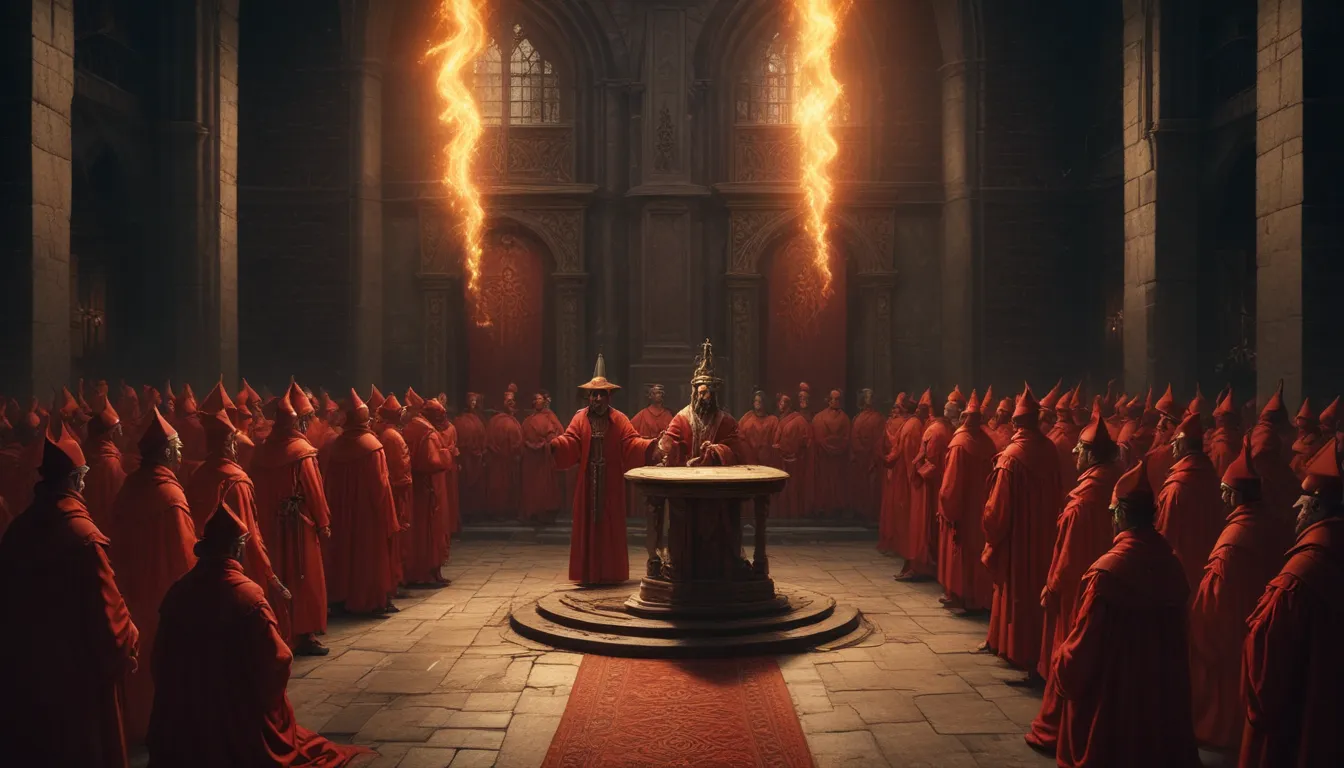The images in our articles may not match the content exactly. They are used to grab your attention, not to show the exact details in the text. The images complement the text but do not replace it.
Have you ever been intrigued by the dark and mysterious tales surrounding the Spanish Inquisition? This pivotal period in history, initiated by Catholic Monarchs Ferdinand II of Aragon and Isabella I of Castile in 1478, aimed to maintain Catholic orthodoxy within their kingdoms. Despite its grim reputation, the Spanish Inquisition holds a wealth of intriguing facts and myths that often go unnoticed. From its unexpected impacts on art and culture to the complex legal procedures it employed, this era is more intricate than commonly believed. In this article, we will unravel 20 fascinating facts about the Spanish Inquisition, shedding light on its profound influence on history and its enduring legacy. Are you ready to challenge your perceptions and delve into the lesser-known aspects of this crucial epoch?
Unraveling the Spanish Inquisition
The Spanish Inquisition, authorized by Pope Sixtus IV in 1478, was a tribunal established by Catholic Monarchs Ferdinand II of Aragon and Isabella I of Castile to maintain Catholic orthodoxy in their realms. This institution was notorious for its methods of ensuring adherence to Catholicism, often resorting to severe and punitive measures.
- Purpose: The primary goal of the Spanish Inquisition was to identify and punish converted Jews and Muslims suspected of practicing their former religions in secret.
The Operational Mechanics of the Spanish Inquisition
Under the direct control of the Spanish monarchy, the Spanish Inquisition followed a structured system for identifying, trying, and sentencing those accused of heresy.
-
Process: Accusations were commonly based on rumors or anonymous tips, leading to the detention of the accused individuals who could be subjected to torture for confessions.
-
Torture Techniques: The Spanish Inquisition employed brutal methods such as waterboarding and the strappado, where victims were suspended by their bound wrists, behind their backs.
-
Auto-da-fé: Public sentencing ceremonies known as auto-da-fé were conducted to announce trial verdicts, sometimes resulting in executions by burning at the stake.
The Multi-faceted Impact of the Spanish Inquisition
The influence of the Spanish Inquisition extended beyond religious boundaries, shaping social, political, and cultural aspects as well.
-
Duration: Lasting over 350 years, the Spanish Inquisition was officially abolished in 1834.
-
Victims: Historians estimate that tens of thousands were tried, with executions ranging from 3,000 to 5,000.
-
Censorship: The Spanish Inquisition enforced strict censorship, regulating which books could be read or imported into Spain.
Dispelling Misconceptions About the Spanish Inquisition
Contrary to popular beliefs, certain aspects of the Spanish Inquisition are often misconstrued or exaggerated.
-
Scale: While brutal, the Spanish Inquisition was not the most lethal inquisition in history, with other countries having similar or higher execution rates for heresy.
-
Efficiency: Despite its reputation, the Spanish Inquisition functioned as a bureaucratic institution with detailed records and a procedural approach to trials.
The Enduring Legacy of the Spanish Inquisition
The impact of the Spanish Inquisition transcends time, influencing religious practices, legal systems, cultural developments, and historical interpretations.
-
Cultural Impact: The Spanish Inquisition contributed to the stereotype of inquisitorial ruthlessness portrayed in popular culture through literature, art, and film.
-
Legal Influence: Elements of the Spanish Inquisition’s procedures, such as the use of witnesses and evidence, have influenced modern legal systems.
-
Historical Interest: It remains a subject of intense study and debate among historians, with continual emergence of new findings and interpretations.
-
Educational Significance: The Spanish Inquisition is a common topic in school and university curricula, teaching about religious intolerance, abuse of power, and human rights importance.
Delving Deeper into the Spanish Inquisition
As we reflect on the dark corridors of history, each fact about the Spanish Inquisition unveils layers of motivation, power dynamics, and impact on countless lives. Understanding this period emphasizes the significance of tolerance and the perils of extremism. Let’s carry these lessons forward, cherishing the resilience of the human spirit in adversity and striving for a more inclusive and understanding future.
Your Contribution Matters
At Thecollector.com, each fact is a gem contributed by real users like you, ensuring a diverse array of insights and information. Our vigorous editorial process guarantees the accuracy and reliability of the facts we share, enriching your exploration and learning experience. Trust in our commitment to quality and authenticity as you embark on a journey to discover and understand history’s enigmatic tales.






